Lotus introduce the lighter, faster Evora Sport 410
Lotus has unveiled a new, lighter and faster version of the Evora 400, badged the Evora Sport 410. Lotus' Lightweight Laboratory has used very possible trick in the book to make sure that the Evora Sport sheds a lot of kilos. 70kgs to be precise.
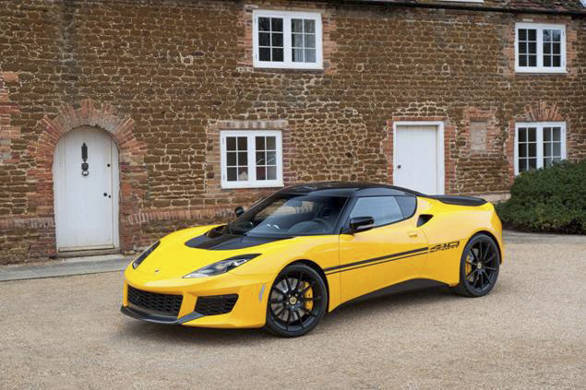
They've managed to do so by assessing every component in the Evora 400 and have gone as far as re-engineering it to reduce mass. The tailgate is now made up of carbon fibre. In fact, a majority of body panels have been made using the same material. These include the front splitter, roof and rear diffuser. The rear three-quarter is also made up of carbon fibre and aids in the fastback styling. Lotus says that it has managed to increase aerodynamic downforce by 15 per cent without increasing drag. The doors are lighter than those on the Evora 400 and so are the trims on the interior.
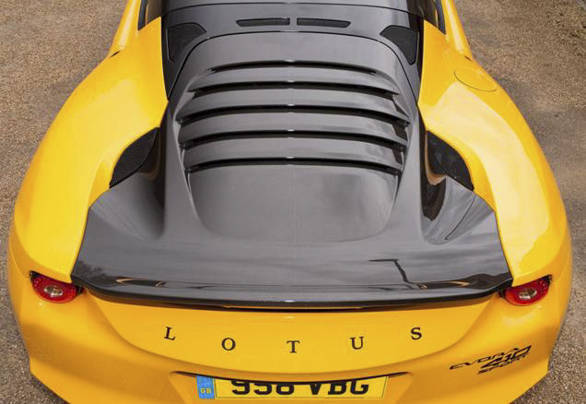
The performance gains are impressive. Tipping the scales at 1,325kg, the Lotus Evora Sport 410 races from 0-100kmph in 3.9seconds (0.2 seconds faster than the Evora 400) while top speed has risen to 300kmph. The Evora Sport 410 laps Lotus' Hethel Test Track in 1 minute and 28 seconds, three seconds faster than the Evora 400. The Lotus Evora Sport 410's 3.5-litre, six-cylinder engine produces 410 PS at 7,000rpm and 410Nm at 3,500rpm. Lotus adds that the Evora Sport 410's reduced weight has also made it a sharper handling car than the Evora 400. This is also courtesy of a revised suspension with improved geometry and new damper settings. The ground clearance has been reduced 5mm and the car gets lightweight forged aluminium wheels and optional Michelin Cup 2 tyres.
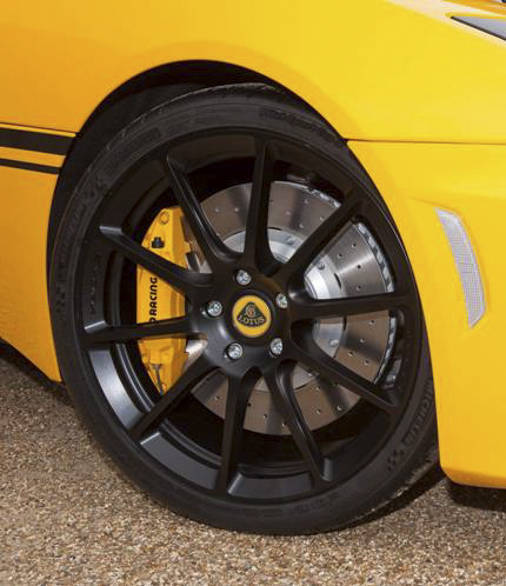
The Evora Sport 410 gets a manual transmission or an optional automatic transmission with paddle shifts. Lotus says the manual transmission features a low inertia flywheel to ensure quicker gear shifts. The Evora Sport 410 also gets the Dynamic Performance Management (DPM) that alters the engine maps between Sport and Race at the touch of a button. The latter provides improved throttle response, reduced intervention of traction control and removes understeer recognition giving the driver a lot more control. The system, however, cuts in if the driver pushes the car too far.
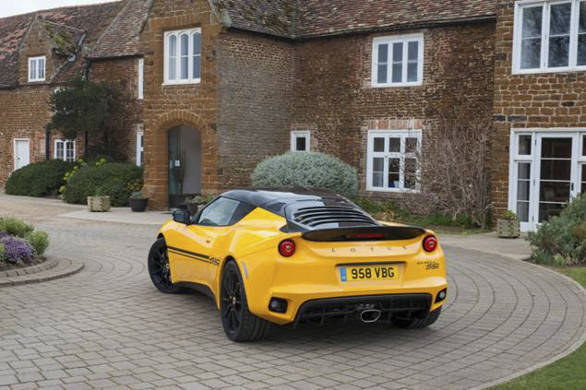
The interior features standard carbon fibre seats and Alcantara trims around the cabin. While there is a touch screen entertainment system, Lotus will remove it in the name of saving weight. In fact there are no door arm rests and storage pockets. However, in case a customer is not a purist, a leather trim package can also be opted for.
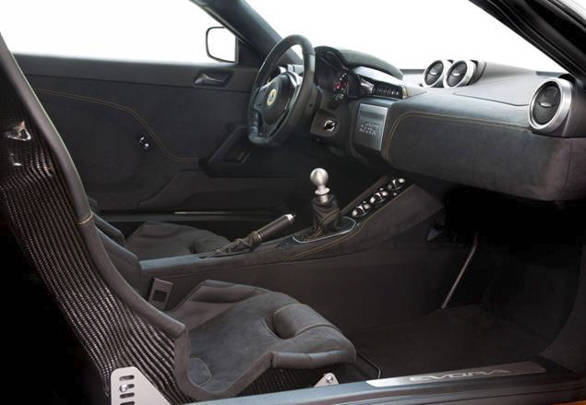
Lotus has limited production of the Evora Sport 410 to 150 units per year and will be available from June 2016. Customers can also personalise their car though the recently introduced Lotus Exclusive programme.
Lotus Evora Sport 410
| In a move that should surprise no one, Lotus has raised the bar once again by lightening the Evora in order to develop the sensational Evora Sport 410. Following on from the recently announced Elise Cup 250, and the Exige Sport 350, Lotus' famous Lightweight Laboratory has been hard at work cutting the weight of the Evora 400 by a massive 70kg. With a host of high-performance carbon fibre components as standard, and sharing the 410 hp supercharged engine with the track-bred 3-Eleven, the Lotus Evora Sport 410 clocks 0-60 in 3.9 seconds on its way to a top speed of 186mph. Jean-Marc Gales, CEO of Group Lotus plc, commented, "We couldn't help ourselves, and many may have guessed what we were planning following our recent announcements. We wanted to make the Evora even better: lighter, faster and sharper, but our team has exceeded our expectations. Lotus has distilled what makes the Evora so special into something that's even more focused. The result is dynamically excellent and nothing short of superb." This new, top-of-the-range Evora has been thoroughly re-evaluated, with every component assessed, optimised and reengineered as required. This covers every aspect of the car, including a drastically simplified carbon fibre tailgate (combining five separate elements into one), new lighter-weight door trim panels and the liberal addition of carbon fibre across the entire car. The Sport 410 builds on the excellent work undertaken in the development of the Evora 400, itself a massive enhancement over the first generation of Evora. However, far from a stripped-out special, the Evora Sport 410 retains excellent road manners, being refined and composed during everyday driving. The significant drop in mass, and a power boost, means the Evora Sport 410 is capable of lapping the company's Hethel test track in 1 minute 28 seconds* - an impressive 3 seconds faster than the Evora 400. Reflecting what Lotus does best, it demonstrates the company's principle of 'adding lightness'. The Lotus Evora Sport 410 is the result of Lotus' philosophy of continuous improvement. With a lower centre of gravity, and a kerb weight slashed to just 1,325 kg, the car provides an impressive 309 hp/tonne. In addition to boosting straight-line speed, the significant reduction in mass has allowed sharper, more agile and intuitive handling - with even greater accuracy and feel. Jean-Marc Gales added, "The Evora chassis was already the best in the business the Evora Sport 410 takes it to a whole new level". Complementing this is a higher-output version of the supercharged, 3.5-litre 6-cylinder engine, developed through the Lotus 3-Eleven project which has beaten Nürburgring records. As a result, the car boasts 410 hp at 7000 rpm and 410 Nm of torque at 3500 rpm. The high-performance, carbon fibre components have played the single biggest role in the evolution of the Evora Sport 410. These include front splitter, roof panel, tailgate, and rear diffuser as well as race-derived sports seats and a revised front access panel. The one-piece carbon tailgate incorporates a louvered section, inspired by some of Lotus' most-famous heritage models, and together with carbon rear quarter-light panels help provide the car with a sleeker, fastback-style trailing roofline. These changes have also improved the car's aerodynamic downforce by 15% with no increase in drag. The car's reduced kerb weight has allowed the recalibration of the suspension, with improved geometry and completely revised damping, as well as a ride height 5mm lower than the Evora 400. As a result, handling is sharper, along with better body and roll control, yet ride comfort and composure is retained. Ultra light-weight, 10-spoke forged aluminium wheels, and optional Michelin Cup 2 tyres, complete the car's dynamic revisions. Appealing to purists, the Evora Sport 410's manual gearbox features a low inertia flywheel, to help ensure swift changes, while a Torsen-type limited slip differential (LSD) gives better traction, and faster exit speeds when cornering. Available as an option, the automatic transmission offers gear selection via lightweight aluminium paddles mounted to the steering wheel. The new Evora Sport 410 also features Lotus' Dynamic Performance Management (DPM) which, selected via a dashboard switch, provides 'Sport' and 'Race' settings. Proportionally increasing throttle response, lowering traction slip thresholds and removing understeer recognition, it allows enhanced control before the system intervenes. As standard, the Evora Sport 410 comes with carbon fibre sports seats trimmed with Alcantara®, along with the steering wheel and centre console. An integrated touch-screen entertainment system can also be specified, including iPod® connectivity and Bluetooth® functionality. The rest of the Sport 410's cabin has received attention as part of its development. Weight saving measures includes attractive one-piece door trim panels finished in Alcantara®, with contrast stitching, the deletion of door arm rests and stowage pockets, the relocation of tailgate and fuel filler release buttons and the removal of speakers - if an entertainment system is not specified. As well as the standard paint selection, the new Evora can also be personalised through the recently launched Lotus Exclusive programme. Combining traditional British craftsmanship with modern design, the service inspires customers to spend time tailoring the character of their Lotus with a comprehensive array of options. The Lotus Evora Sport 410 will be limited to a global production run of one-hundred and fifty vehicles per year and will be available in all major markets from June 2016. A specific North American version of the Evora Sport 410 will be announced later in 2016. Those wishing to register their interest in the new Lotus Evora Sport 410 should visit: www.lotuscars.com/lotus-evora-range | |
Related Stories
Top Stories
Latest Videos
Most Popular
- Budget Sportbike Showdown: Kawasaki Ninja 500 vs Aprilia RS 457 vs Yamaha YZF-R3
- Mumbai-Pune Expressway speed restrictions updated
- 2014 Triumph Daytona 675 vs 2024 Kawasaki ZX6R - A Decade of Evolution in Supersport Motorcycles
- 2024 Hyundai Creta vs Toyota Urban Cruiser Hyryder vs Skoda Kushaq comparison review - the hype is real?
- Nissan Magnite EZ-Shift review - is the AMT any good?














